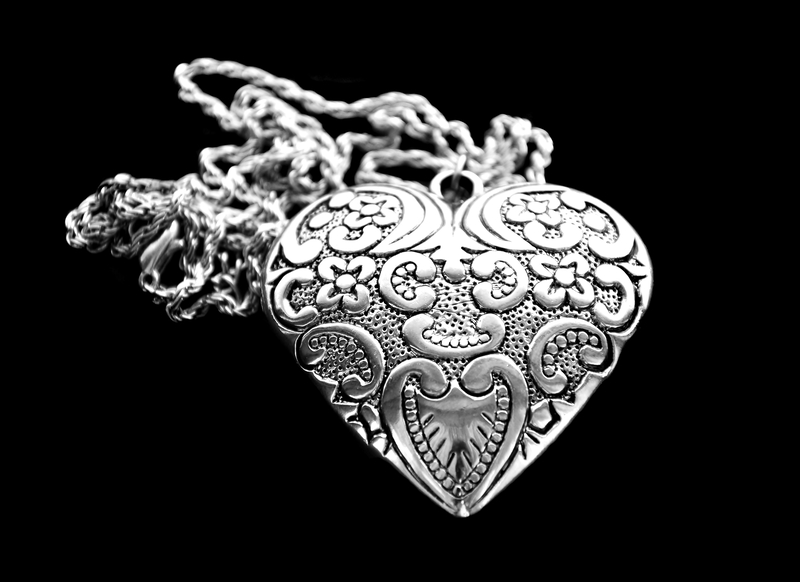Responsive Wardrobe Organization: Flexibility in Small Spaces
Posted on 02/09/2025
Responsive Wardrobe Organization: Flexibility in Small Spaces
Modern living often means making the most out of limited square footage. In urban settings or petite apartments, the challenge of optimizing space extends to every aspect of daily life--including where and how you store clothing. This is where responsive wardrobe organization comes in, delivering a seamless solution that emphasizes both flexibility and functionality in small spaces.
What is Responsive Wardrobe Organization?
Responsive wardrobe organization is a dynamic approach to clothing storage that adapts to your changing needs, lifestyle, and available space. Unlike traditional, static closets, a responsive system is designed to evolve--allowing for reconfiguration, expansion, and retraction as necessary. This adaptability is essential for urban dwellers, small apartment tenants, or anyone seeking to declutter their home without sacrificing style or convenience.
Why is Flexibility Important in Small Space Wardrobes?
Small living spaces present unique challenges, and wardrobes are notoriously difficult to downsize. Flexibility is critical for several reasons:
- Seasonal changes require you to rotate clothing and accessories efficiently.
- Growing families or changing fashion trends may necessitate more space.
- Storage needs can shift with life events, such as moving, subletting, or redecorating.
- Multi-purpose rooms need components that can adapt, slide, or stack.
With the right flexible wardrobe solutions, you can keep your space organized, visually appealing, and responsive to new demands.

Benefits of Responsive Closet Organization Systems
- Space Efficiency: Use every inch wisely, even in awkward corners.
- Customizable: Adjust, add, or remove components as your wardrobe evolves.
- Easy Maintenance: Modular designs allow for easier cleaning and rearrangement.
- Enhanced Aesthetics: Modern, minimal, or hidden designs bring visual harmony to small rooms.
- Maximize Accessibility: Everything is within arm's reach, reducing time spent searching.
Types of Flexible Wardrobe Organization Systems
There are several options when it comes to responsive closet layouts and adaptable wardrobe storage systems. Consider the following strategies:
1. Modular Wardrobe Systems
Modular wardrobes are designed with interlocking components--drawers, shelves, rods, and baskets--that can be arranged in countless configurations. You can add modules as your needs grow, or downsize if space tightens.
2. Freestanding Closet Units
In rentals or small bedrooms, freestanding closets are invaluable. They can be repositioned, and many feature wheels for easy movement. They provide instant extra storage without permanent installation.
3. Adjustable Closet Rods & Shelves
Telescoping rods and adjustable shelving are easy to install and require no professional help. This method supports quick changeovers for different seasons or sharing closets with a partner or roommate.
4. Sliding and Folding Doors
Replace swinging doors with sliding or bi-fold models to save floor space and ensure access even in tight quarters.
5. Under-Bed & Multi-Use Furniture
Leverage under-bed storage bins or beds with built-in drawers for offseason clothes, shoes, or bedding. Furniture that wears two hats--like ottomans or benches with hidden storage--boosts functionality.
6. Open-Concept Closet Solutions
If traditional closets feel restrictive, consider an open wardrobe system with exposed hanging bars, shelves, and attractive baskets. These systems encourage minimalism and keep you mindful of what you own.
Responsive Wardrobe Design: Space-Saving Tips and Tricks
Want more effective ways to organize a wardrobe for a small space? Here are actionable tips that make flexible closet organization easy and stylish:
1. Declutter Before You Organize
Start your journey toward a responsive wardrobe by removing what you no longer wear or need. Donate unused items to charity or sell them online. A slimmer selection means a nimbler organization system and less visual clutter.
2. Use Vertical Space
Stack shelves and hanging units to the ceiling of your closet. Hang hooks or racks behind doors for scarves, belts, or hats. Vertical organization multiplies your usable space without expanding your footprint.
3. Maximize Hidden Storage
- Install pull-out drawers under hanging racks for undergarments or socks.
- Use baskets on high shelves for accessories you use less often.
- Add shoe organizers and over-the-door hooks for purses or jewelry.
4. Incorporate Transparent Containers
Clear boxes or bins help you spot contents at a glance--so you never waste time hunting for a favorite item.
5. Label Everything
Labeling drawers, bins, and racks streamlines getting dressed and putting garments away. It's particularly helpful in shared spaces or for families with kids.
6. Embrace Multifunctional Furniture
Opt for benches with storage, wall-mounted shelves, and beds with drawers. They take the pressure off your main wardrobe and introduce flexibility throughout the room.
Recommended Products for Responsive Small Space Wardrobes
There are countless brands and products dedicated to flexible wardrobe organization. Here are a few standout options to help you get started:
- Elfa Closet Systems: Sold by The Container Store, Elfa offers customizable shelving and drawer components that you can rearrange anytime.
- IKEA PAX Wardrobe Series: The PAX system allows you to combine shelves, drawers, baskets, and mirrors for a totally bespoke wardrobe.
- Whitmor Freestanding Garment Racks: Mobile and lightweight, these racks fit anywhere and can be moved as needed.
- Space-Saving Hangers: Slimline, cascading, or tiered hangers maximize hanging space for shirts, pants, and accessories.
- Over-the-Door Organizers: Perfect for shoes, bags, or small accessories, these organizers create extra storage behind virtually any door.
- Vacuum-Sealed Storage Bags: Compress bulky seasonal garments to easily fit under beds or on top of wardrobes.
Step-By-Step Guide to Creating a Responsive Wardrobe System
Ready to build your own adaptive wardrobe organization? Here's a simple process to follow for maximum flexibility:
- Measure Your Space: Start by taking dimensions of your closet, room, or area where you plan to store clothes. Don't forget to measure heights and any sloping ceilings or odd corners.
- Assess Your Needs: Make a list of items you own and want to store. Consider categories (shirts, pants, accessories) and seasons.
- Pick a Flexible System: Choose a modular, freestanding, or open wardrobe system that suits your needs. Remember, modular units can be upgraded and repositioned easily.
- Plan Your Layout: Sketch on paper or use free online design tools to arrange your chosen components. Think about access, workflow, and visual balance.
- Install & Assemble: Follow manufacturer's instructions to install rods, shelves, and drawers. Add adjustable or rolling parts as needed for future flexibility.
- Organize By Frequency of Use: Place your most-used items at eye or hand level for quick access. Store out-of-season or occasional-use items higher up or beneath the bed.
- Personalize with Accessories: Add baskets, drawer dividers, and labeled bins for custom organization. Consider an area for accessories, shoes, or jewelry.
- Evaluate and Adjust: After a few weeks, assess what's working and what isn't. Responsive closet systems are designed to evolve--swap modules or rearrange as required.
Responsive Wardrobe Organization: Maintenance and Long Term Success
Even the best flexible wardrobe depends on ongoing maintenance. Here are habits to keep your small space wardrobe organized and functional over time:
- Edit Seasonally: At the change of every season, evaluate what's worn, what's not, and donate or store as needed.
- Use Inventory Apps: Technology can help! Wardrobe and closet inventory apps remind you of what you own and when you last wore it.
- Return Items to Their Place: When you finish laundry, take a few minutes to return everything to its designated spot. It keeps clutter at bay and your system responsive.
- Set Up a Donation Bag: Keep a bag or bin in the closet for items you decide to let go. Drop off at charity once full.
- Reconfigure As Needed: Life changes, and so do clothing needs! Don't be afraid to move shelves, relocate racks, or add new pieces as your lifestyle evolves.
Innovative Technology in Flexible Closet Organization
Smart technology is entering even the smallest of wardrobe spaces. Here's how you can combine high-tech solutions with your adaptive closet layouts:
- Automated Clothing Rails: Motorized rails allow you to lower hanging clothes with a button, making high-up storage more accessible.
- Motion-Activated Lighting: Slim LED lights illuminate the darkest corners for easier outfit selection.
- Custom Closet Design Tools: Many furniture manufacturers provide 3D visualization tools to plan and preview your closet configuration before purchase.
- App-Integrated Inventory Systems: Log your wardrobe via an app and receive cleaning, styling, or arrangement reminders for ultimate organization control.
Responsive Wardrobe Organization for Every Budget
Whether you're ready to invest in a high-end closet makeover or want affordable solutions, the responsive wardrobe organization principle can work for you. Here's how:
- Budget: Use DIY cube shelves, stackable bins, rolling carts, and repurposed crates to build a modular system. Add tension rods and S-hooks for instant vertical storage.
- Mid-Range: Opt for store-bought modular systems or combine off-the-shelf open racks with labeled bins and space-saving hangers. Find versatile furniture at IKEA or Target.
- Premium: Invest in a custom-designed wardrobe system tailored by a closet professional, complete with built-in lighting, mirrors, and integrated technology.
Recap: The Keys to a Flexible Wardrobe in Small Spaces
To thriving in compact homes, you need storage that's as adaptable as your lifestyle. Responsive wardrobe organization provides:
- Maximum flexibility for evolving storage needs
- Space-efficient solutions for every nook and cranny
- Easy maintenance and decluttering
- Modern aesthetics that fit any decor
By embracing adjustable closet systems, modular furniture, and practical storage accessories, you can enjoy a bedroom or living space that stays organized, accessible, and beautiful--no matter how little room you have to spare.

Frequently Asked Questions About Responsive Wardrobe Organization
What is the best way to organize a wardrobe without a closet?
Use freestanding racks, open shelving, under-bed storage, and decorative baskets to keep garments organized and easy to access. Modular units and multi-use furniture can double clothing storage without the need for traditional closets.
How often should I update my wardrobe organization system?
Ideally, assess your system with the turn of every season, or any time your clothing needs change (such as after a move, job change, or addition to the household).
Can responsive wardrobe solutions work in kids' rooms?
Absolutely! Look for low-hanging racks, open bins, and adjustable shelving that can grow with your child. Bright labels and open baskets encourage independence and tidiness.
What are the top brands for flexible closet organization?
Some trusted names include Elfa, IKEA, Rubbermaid, California Closets, Wayfair, and Whitmor. Each offers a range of flexible systems for different needs and budgets.
Ready to Begin? Start Your Journey to a More Flexible Wardrobe
Responsive wardrobe organization isn't just a trend--it's a practical, empowering way to make the most of every inch of your living area. Whether your closet is a walk-in, a single rod, or creative DIY in a corner, there's a flexible system that can transform your daily routine and enhance your lifestyle. Say goodbye to clutter and hello to stylish, stress-free living--even in the smallest of spaces.



